Haiku Me Harder
What is Haiku Me Harder?
Haiku Me Harder is a fast-paced, card game that combines creativity, humor, and poetry in a way you’ve never seen before. Players craft witty, unexpected haikus using line cards to respond to wild and clever prompts, all while competing to impress their fellow players. It’s a game where your imagination takes center stage, your words make people laugh (or blush), and the art of the haiku becomes the ultimate tool for fun.
The Idea: Combining Poetry and Competitive Gaming
The inspiration for Haiku Me Harder came to me while playing Cards Against Humanity. One challenge I noticed was that the judge would read the cards aloud, often missing the tone I intended. I wanted to create a game where players could own their voices and bring their interpretations to life. As a lover of poetry slams and competitive games, I saw an opportunity to combine these passions into a unique haiku card game that celebrated creativity, humor, and the art of performance.
Building a Card Game / The Process
Brainstorming and Initial Validation
I shared my idea with my executive coach, who encouraged me to move forward and start building. This validated the concept and reinforced that the only way to test an idea's viability is by taking action.
I shared my idea with my executive coach, who encouraged me to move forward and start building. This validated the concept and reinforced that the only way to test an idea's viability is by taking action.
Content Generation and Refinement
To begin, I used ChatGPT to generate 20 "dirty poetry prompts" as a base. After reviewing and refining the results, I curated a list of clever, provocative prompts. This iterative editing process ensured the content was both engaging and appropriate for the tone of the game.
To begin, I used ChatGPT to generate 20 "dirty poetry prompts" as a base. After reviewing and refining the results, I curated a list of clever, provocative prompts. This iterative editing process ensured the content was both engaging and appropriate for the tone of the game.
I organized the content in an Excel sheet, creating columns for 5-syllable lines, 7-syllable lines, and poem prompts. This structure allowed me to experiment with combinations, balancing humor, cleverness, and creativity.
Design Exploration
I moved into visual design, exploring a color palette and typography that suited the playful yet edgy tone of the game. Using Pinterest, Coolors, and Dribbble for inspiration, I selected hex codes and later converted them to Pantone colors for print.
I moved into visual design, exploring a color palette and typography that suited the playful yet edgy tone of the game. Using Pinterest, Coolors, and Dribbble for inspiration, I selected hex codes and later converted them to Pantone colors for print.
I then translated these design elements into early card mockups. Knowing the cards would be printed at 2.5"x3.5", I created a precise layout in sheets, testing the copy and design to ensure readability and aesthetic balance.
Prototyping and Printing
Once the card designs were finalized, I filled them with the haiku lines from my spreadsheet and prepared them for printing. Within a week of the initial idea, I had the first round of cards printed and ready for testing.
Once the card designs were finalized, I filled them with the haiku lines from my spreadsheet and prepared them for printing. Within a week of the initial idea, I had the first round of cards printed and ready for testing.
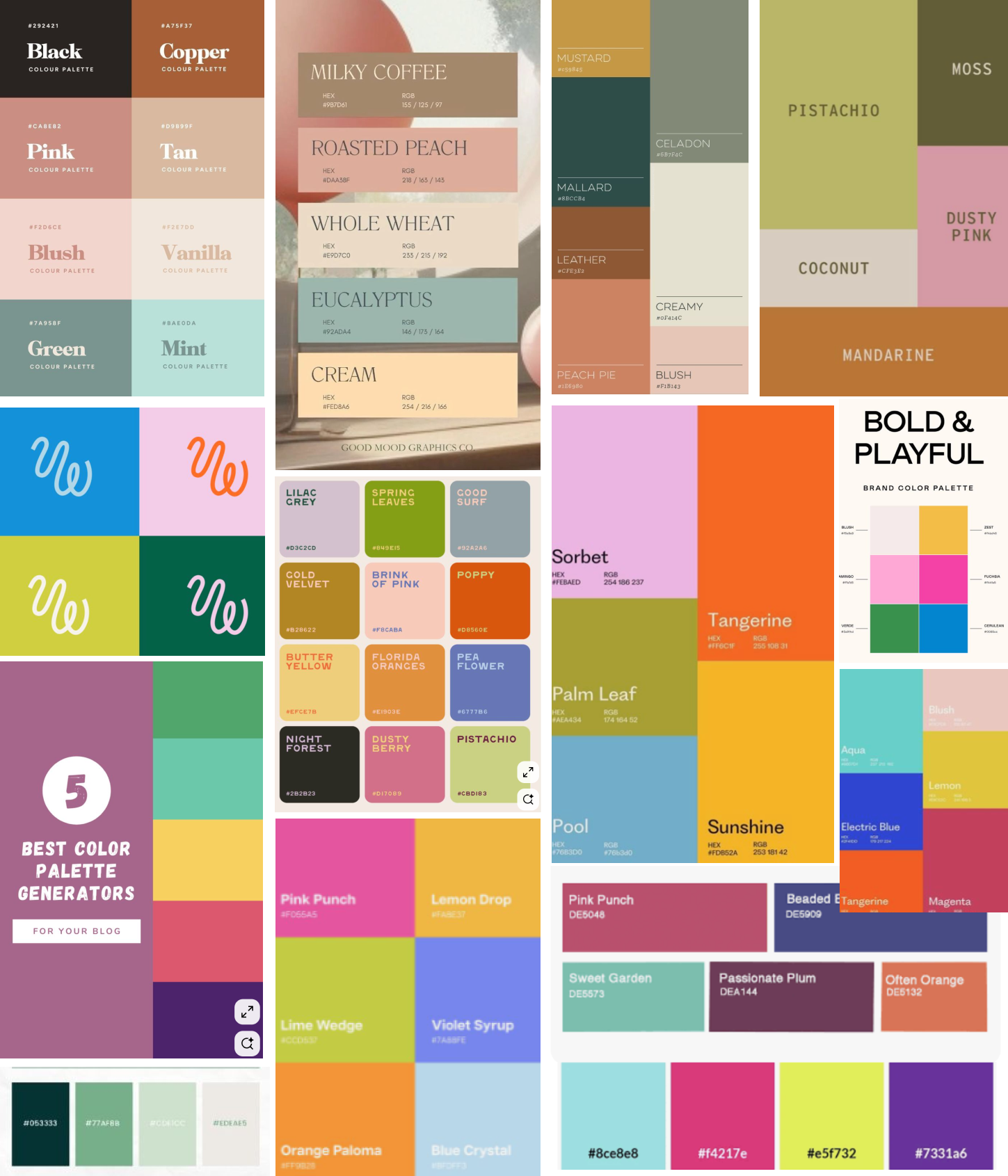
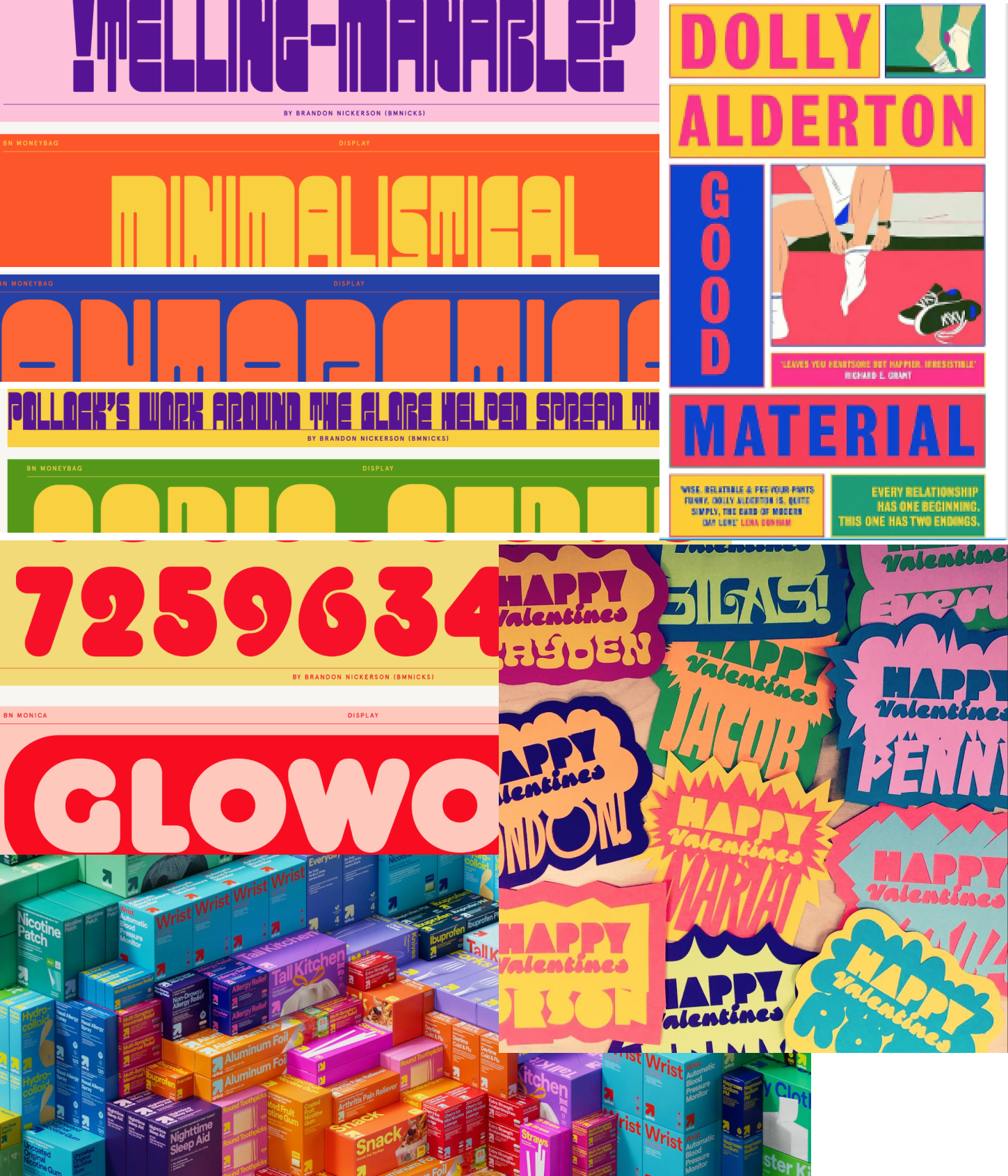
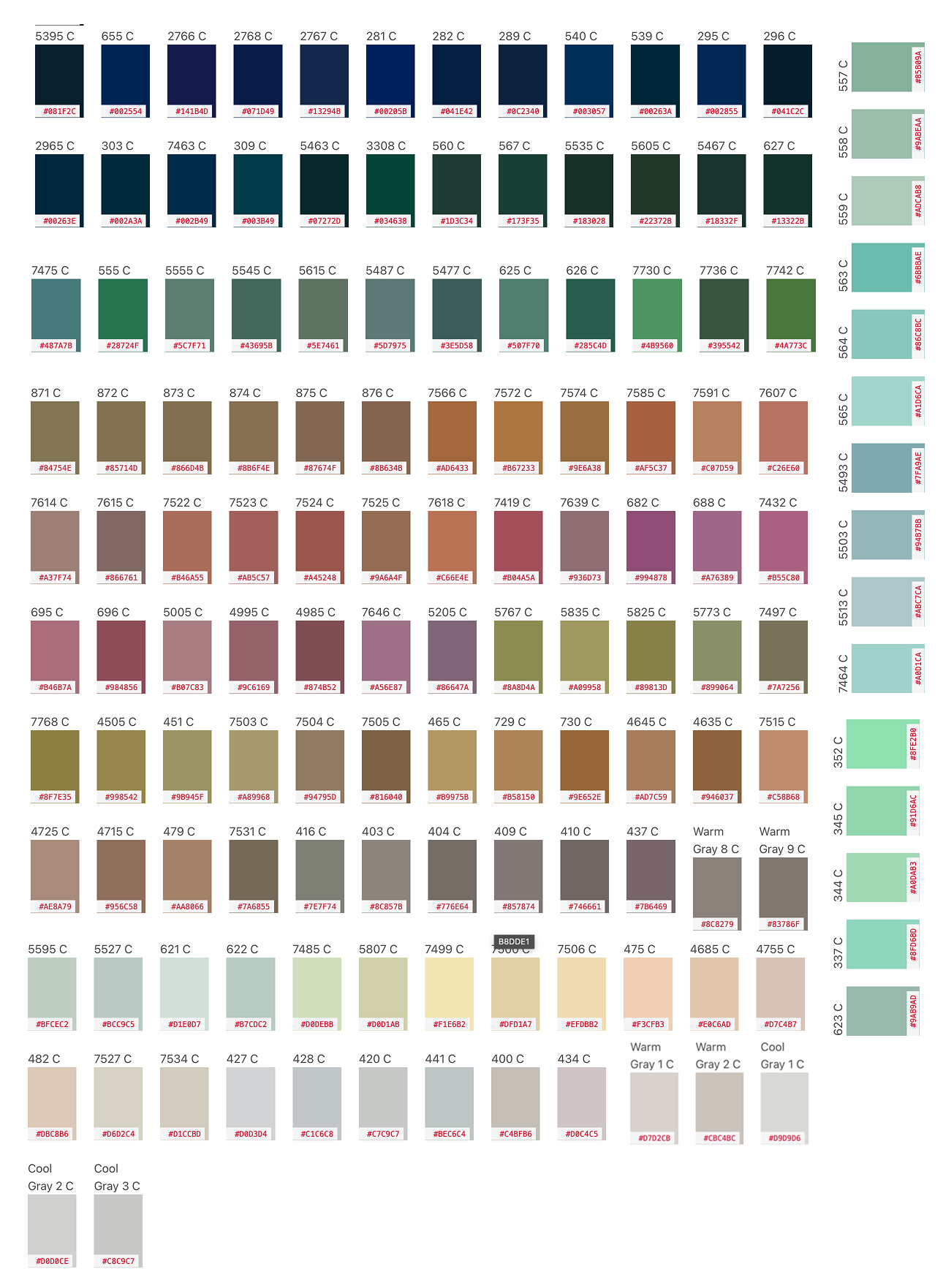
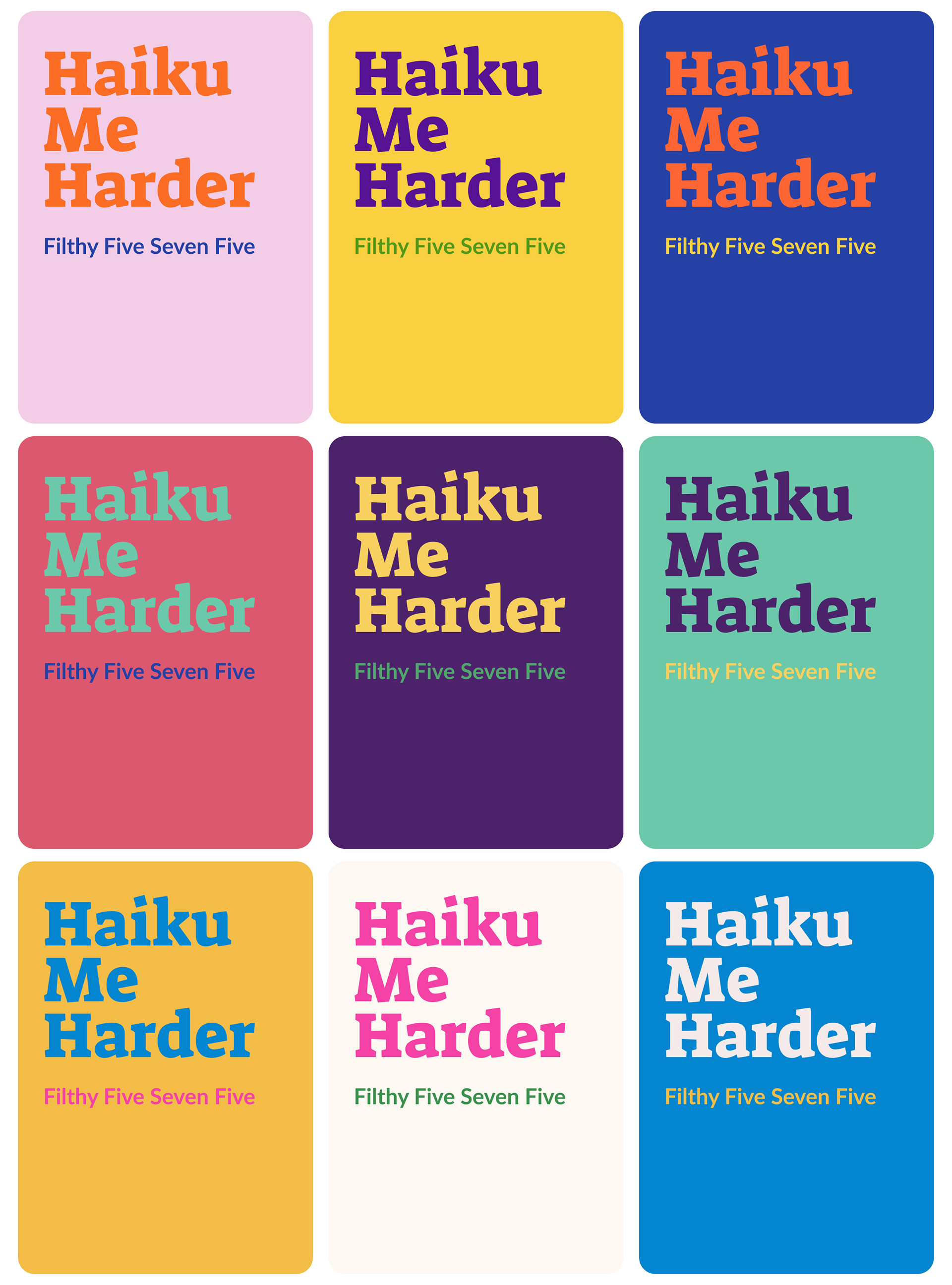
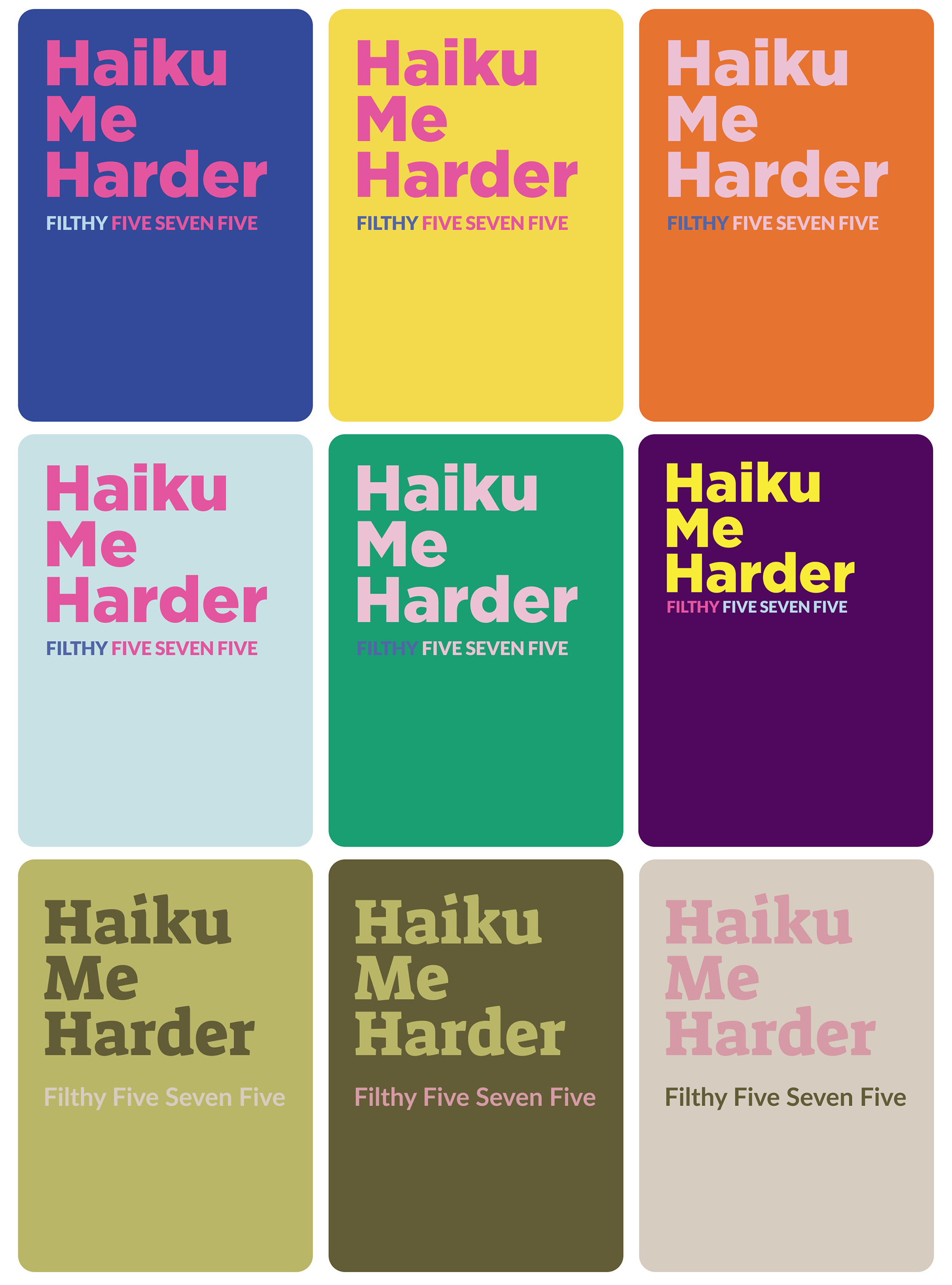
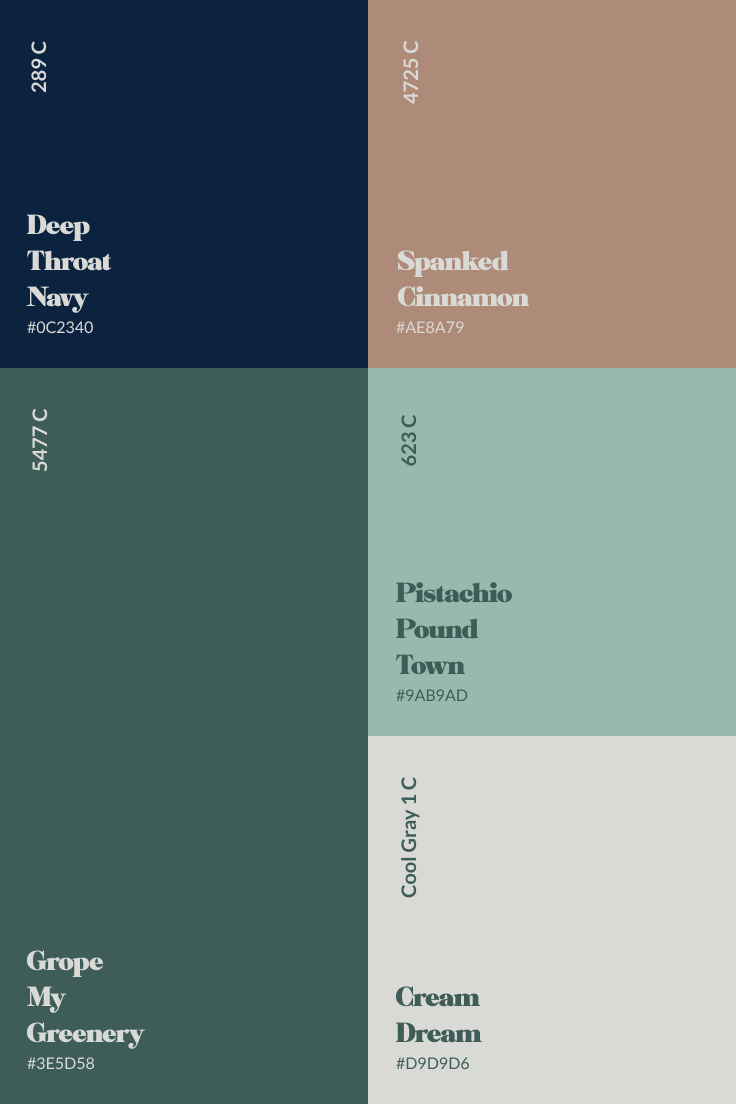
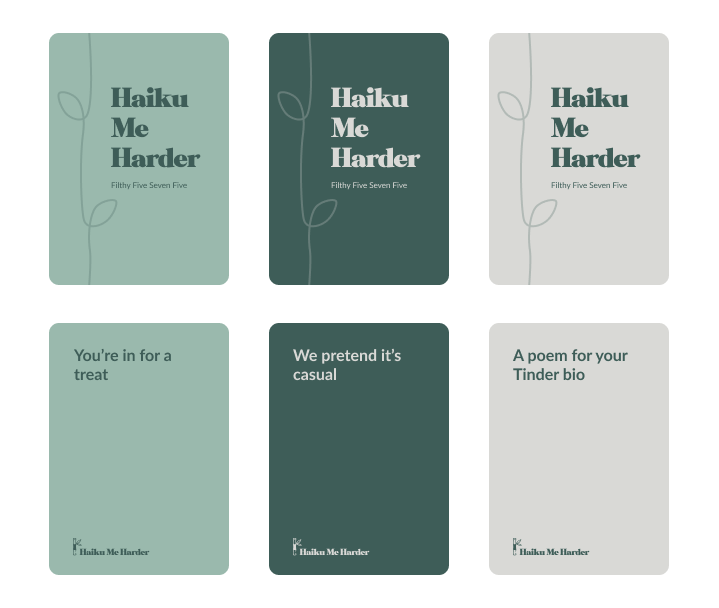
User Testing
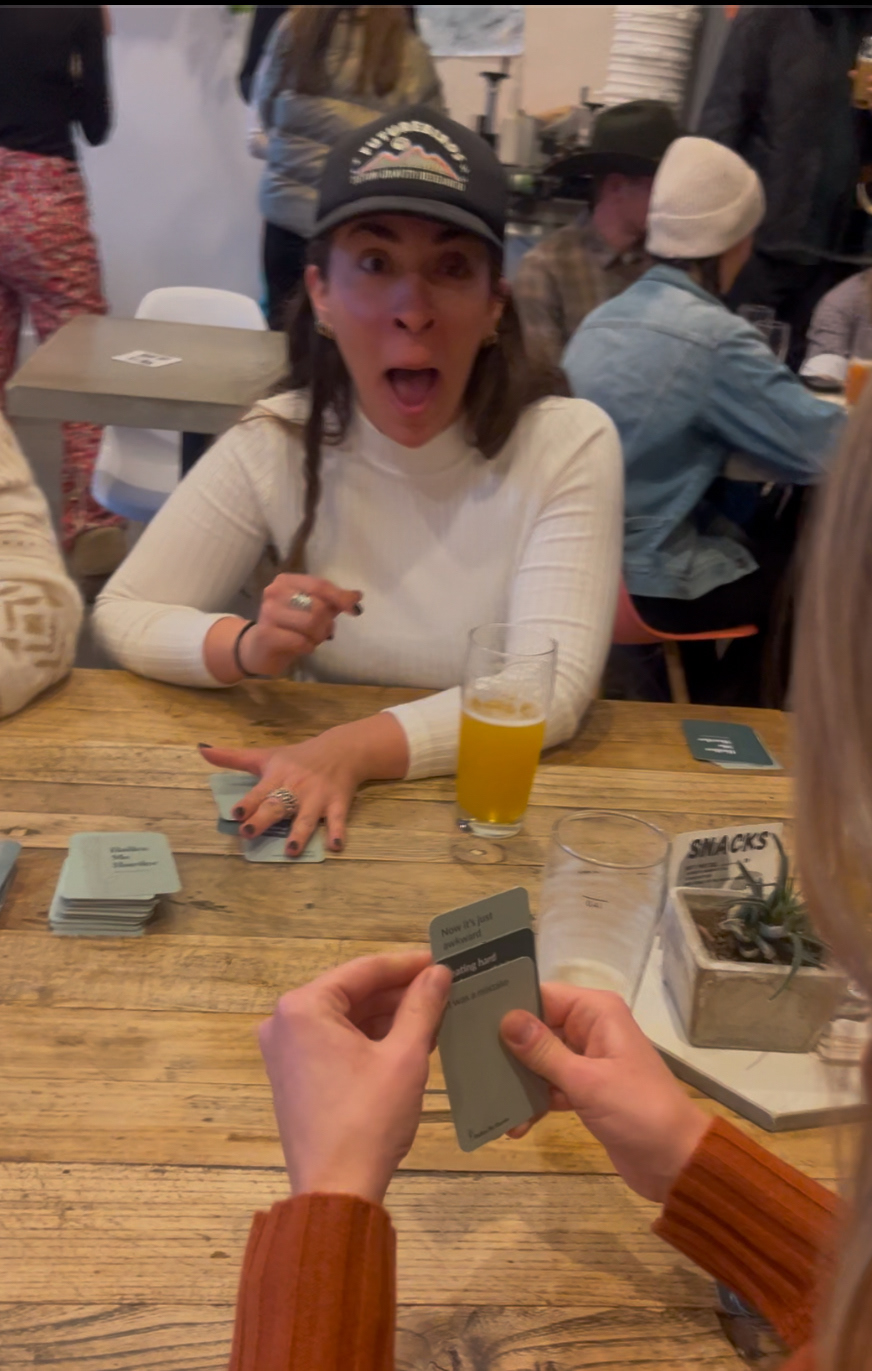
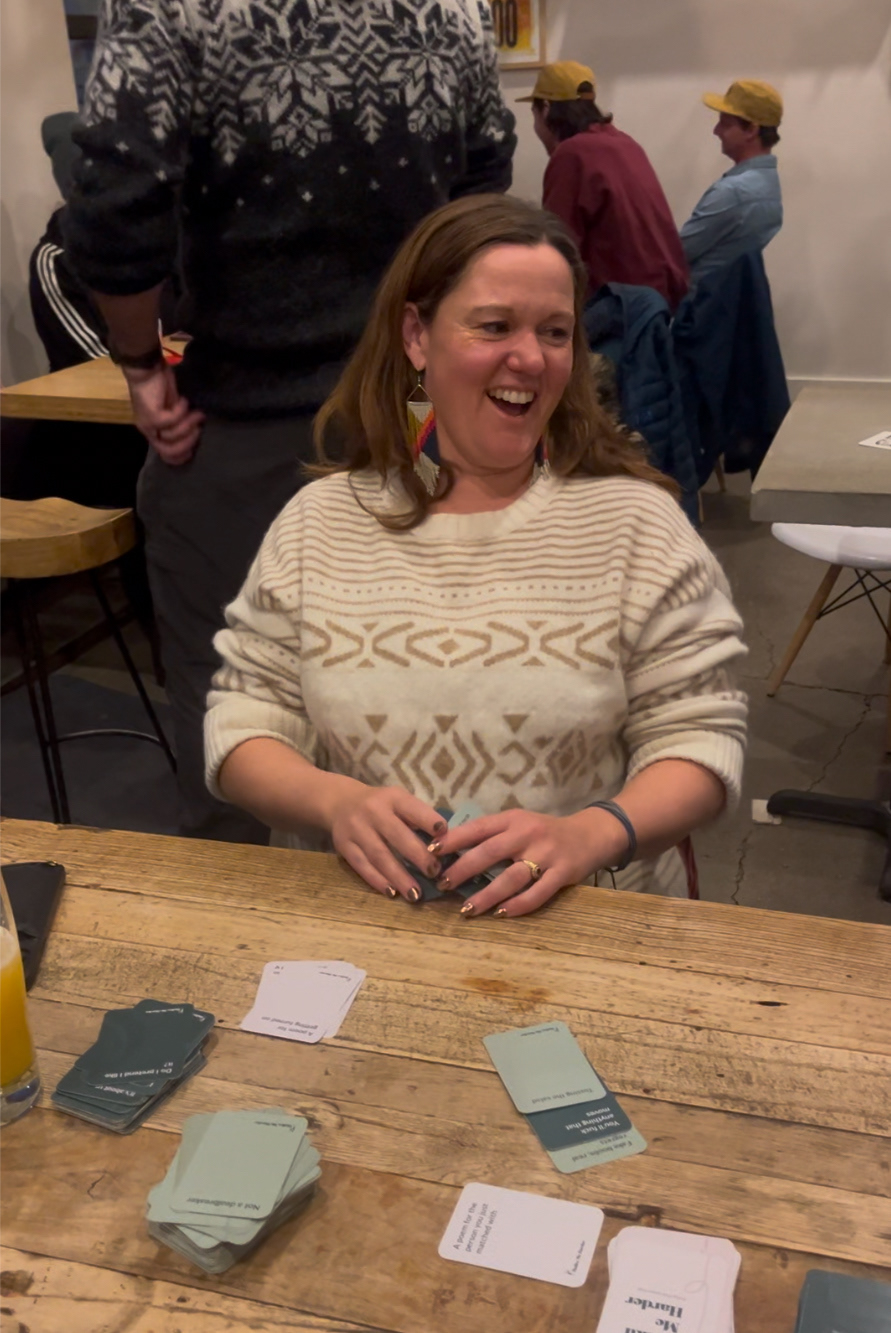
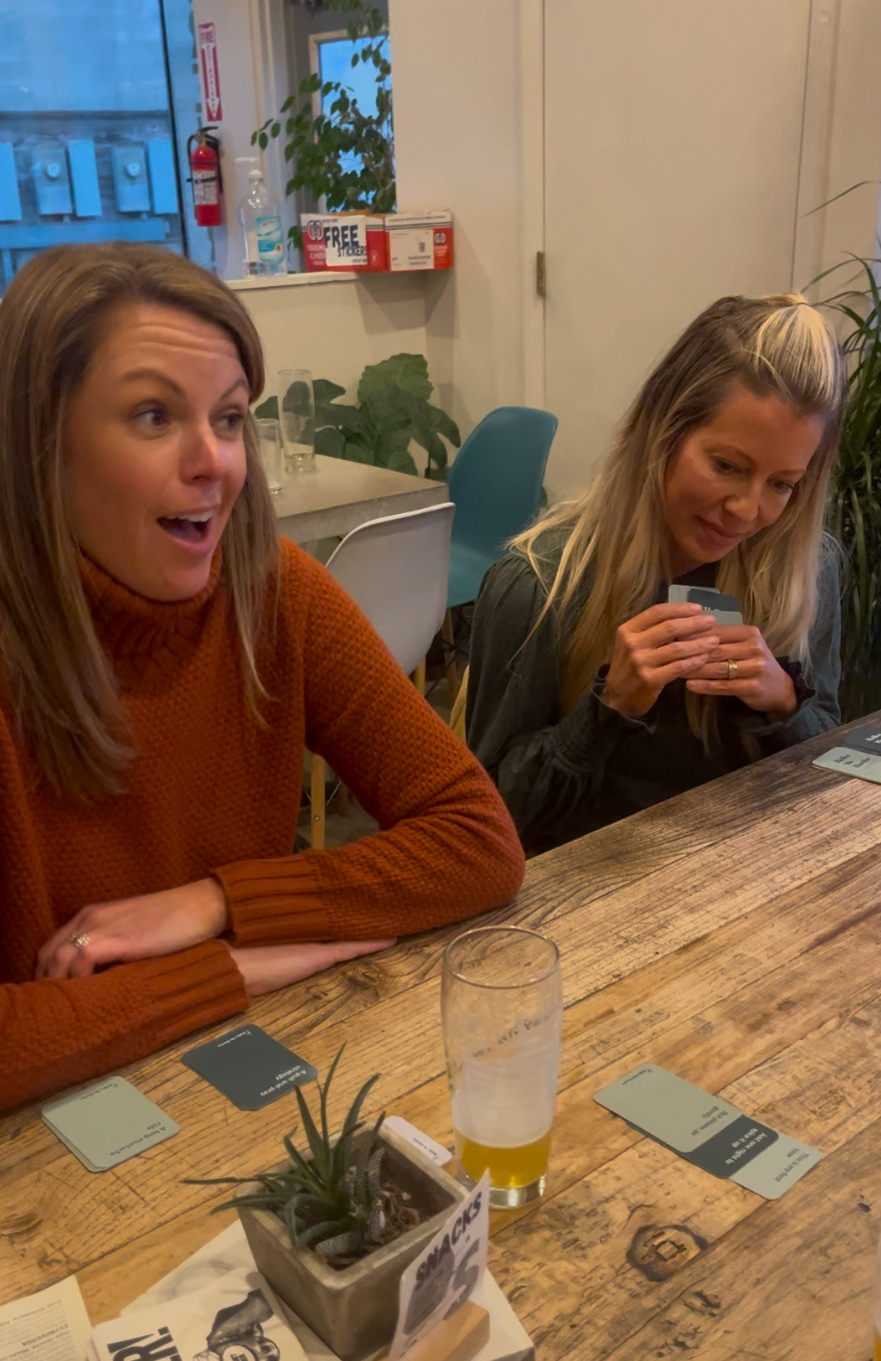
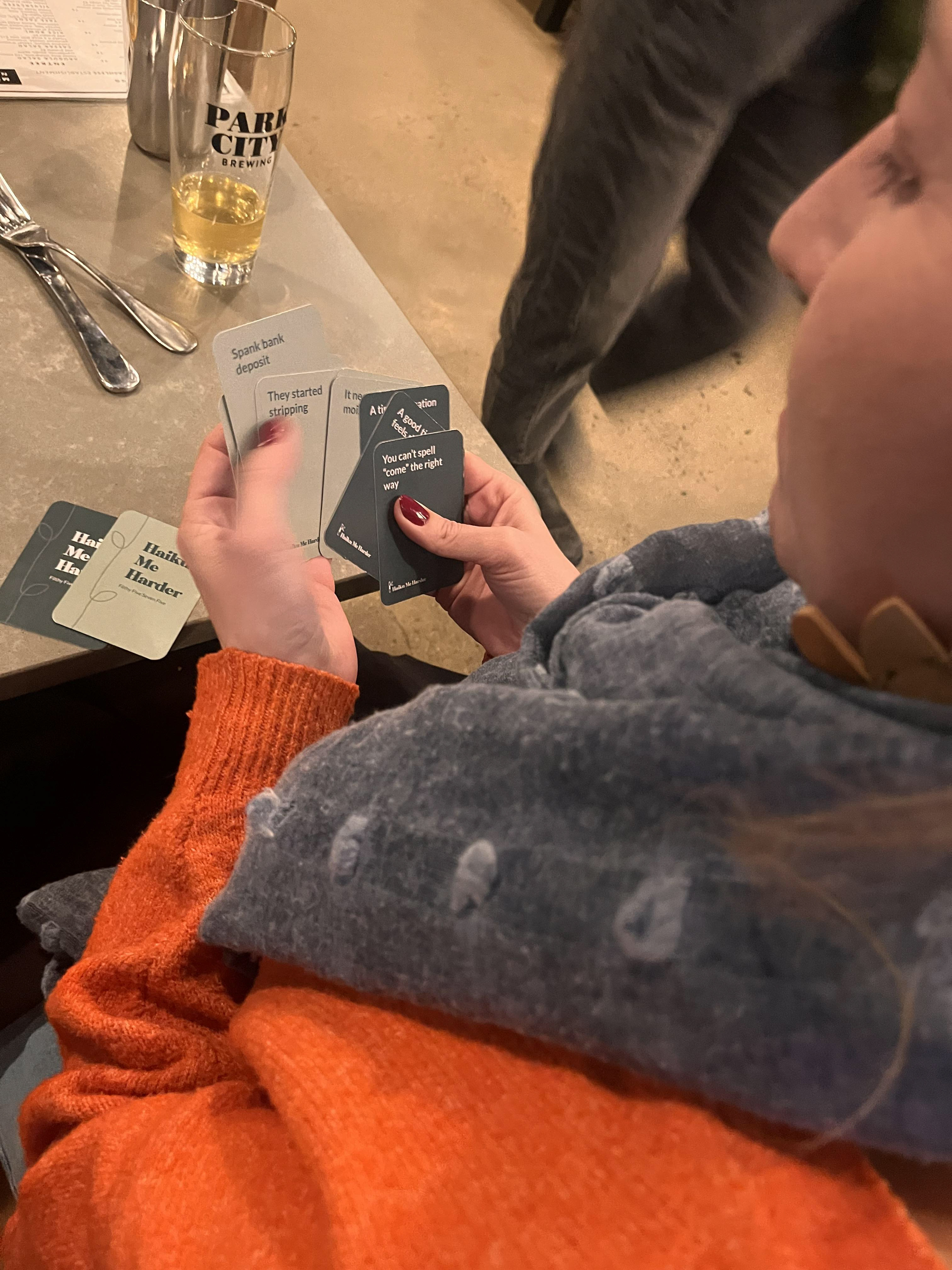
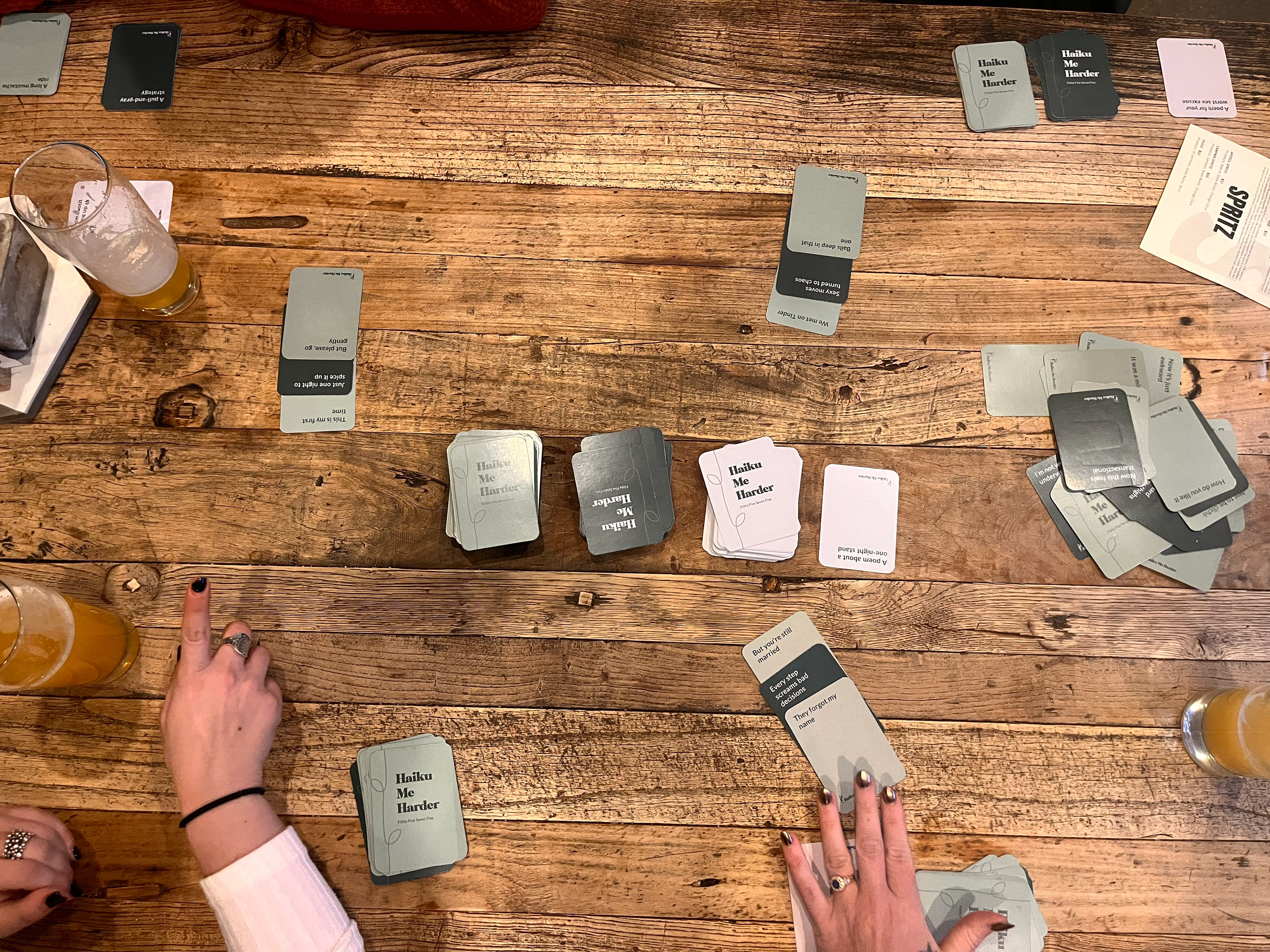
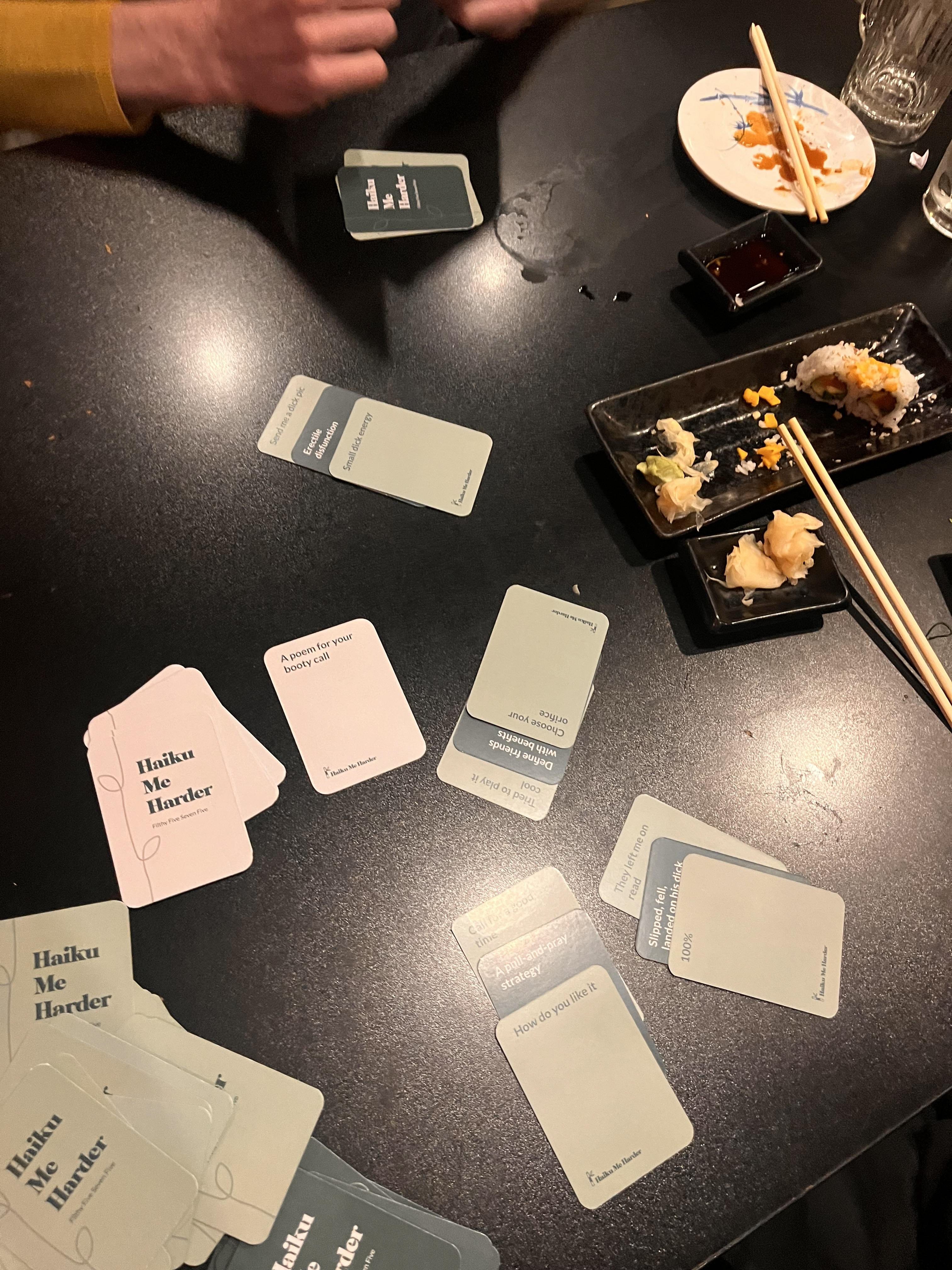
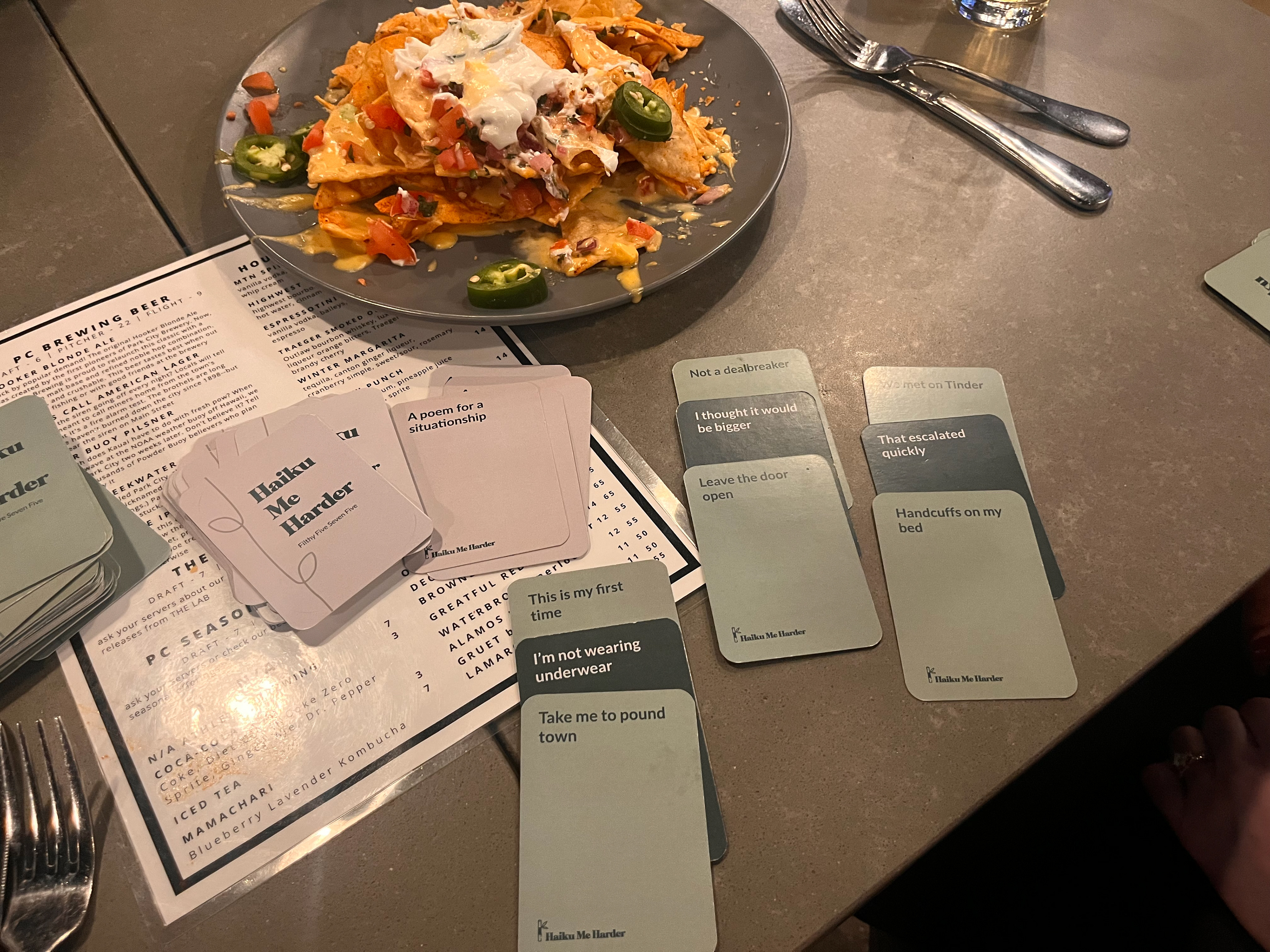
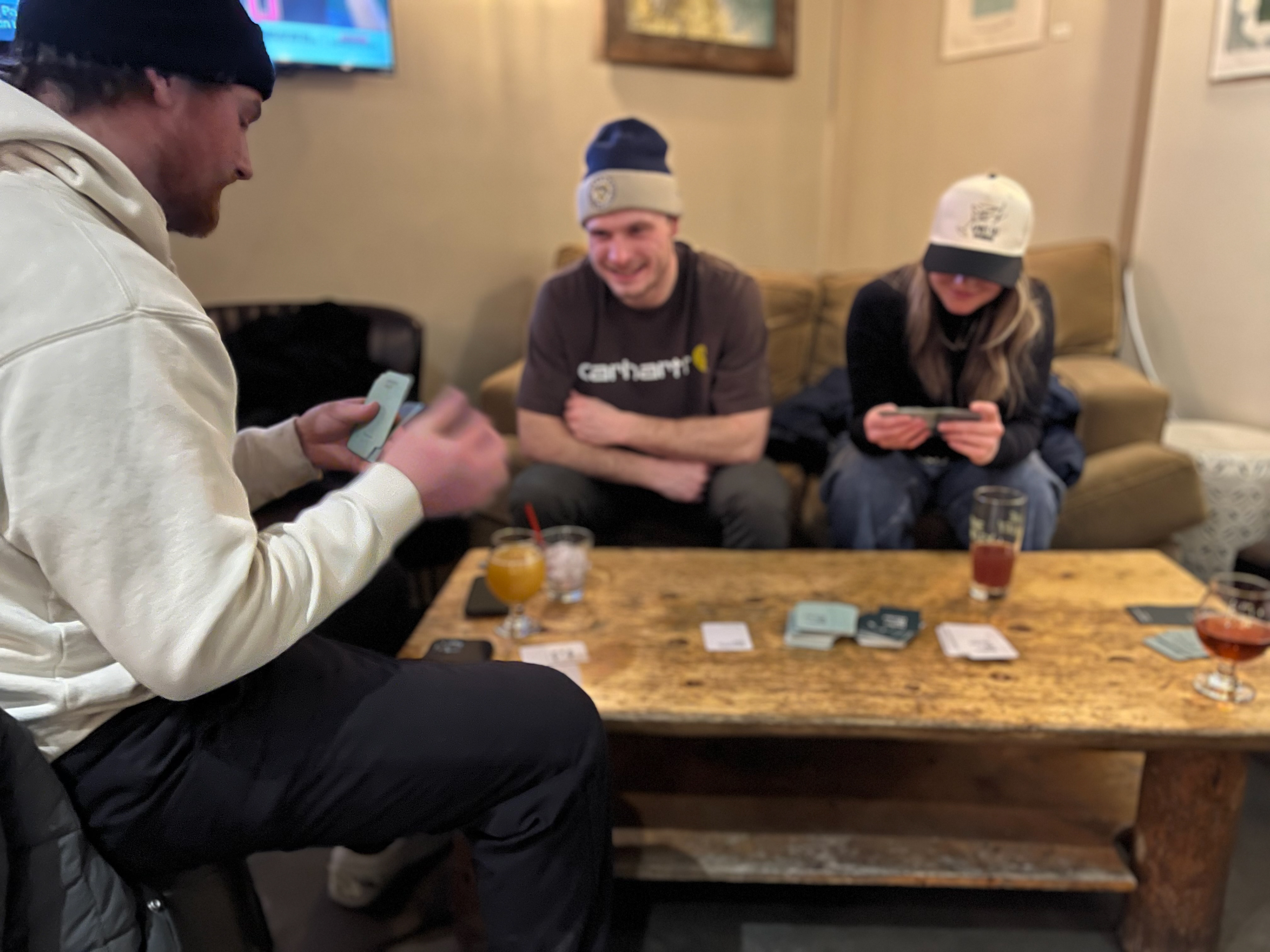
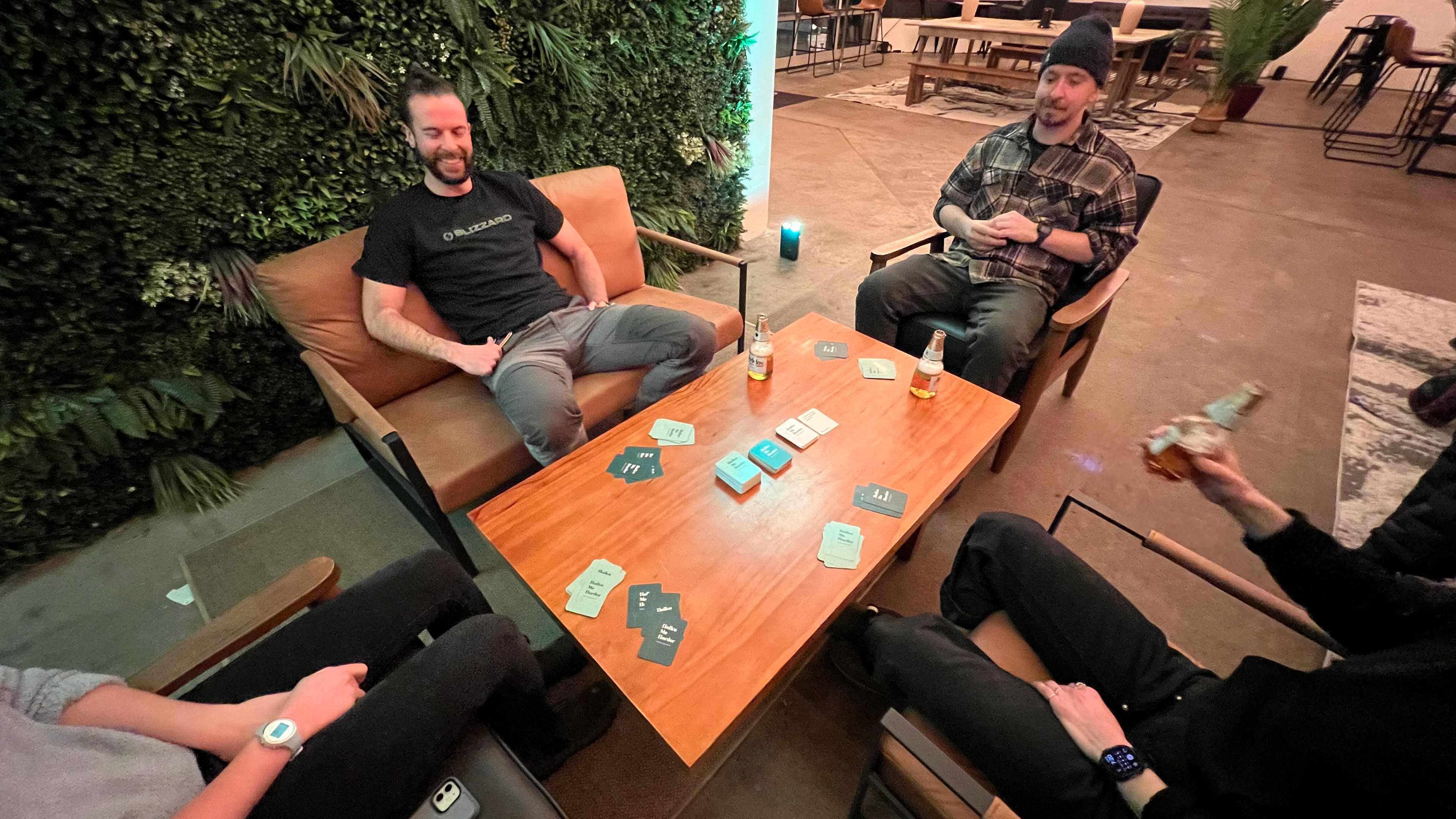
Testing Haiku Me Harder was one of the most rewarding parts of the process. I gathered friends at homes, restaurants, and breweries, setting the stage for a casual, lively atmosphere where the game could shine. As prompts were flipped and haikus constructed, the room filled with laughter and excitement. I watched as players debated the best lines, shared their interpretations, and fully engaged with the spirit of the game.
To ensure thorough feedback, I guided the playtests with a structured approach:
Observation: I noted how players interacted with the prompts and line cards, observing moments of hesitation or confusion.
Feedback Sessions: After each round, I facilitated a quick debrief, asking players what they loved, what felt awkward, and any suggestions for improvement.
Iterative Adjustments: Between sessions, I made small tweaks to the content and rules, ensuring the next playtest would refine the experience further.
These sessions not only helped me identify areas for improvement but also validated the joy and engagement the game brought to players.
Observations: During user testing, I noticed a recurring point of confusion: players were struggling to understand the 5-7-5 haiku format and how to correctly order the cards. Recognizing this as a usability issue, I returned to the drawing board to refine the visual hierarchy and interaction cues on each card. I explored multiple layout variations and introduced subtle design prompts to guide players through the haiku structure intuitively. After iterating on the design, I conducted another round of testing to validate the changes, resulting in a smoother, more engaging user experience.
Box Design
I kicked off the design process the way any designer with a sense of humor and a Pinterest account would: by diving into inspiration from other card games, collector sets, and indie Kickstarter hits. I studied structure, form, and materials, and used that research to guide what would feel most fun (and most filthy) for Haiku Me Harder.
I also thought ahead: depending on the game’s success, I can expand into other themed deck sizes and variations in future launches. (Yes, I already have expansion packs and bachelorette editions in mind.)
Once the structural decision was made, I mocked up the box to align with the brand's tone, bold typography, color that pops on shelves (and in group chats), and messaging that turns heads and raises eyebrows. Every detail, from copy to construction, was designed to reflect the unapologetic fun and filthy creativity of the game itself.
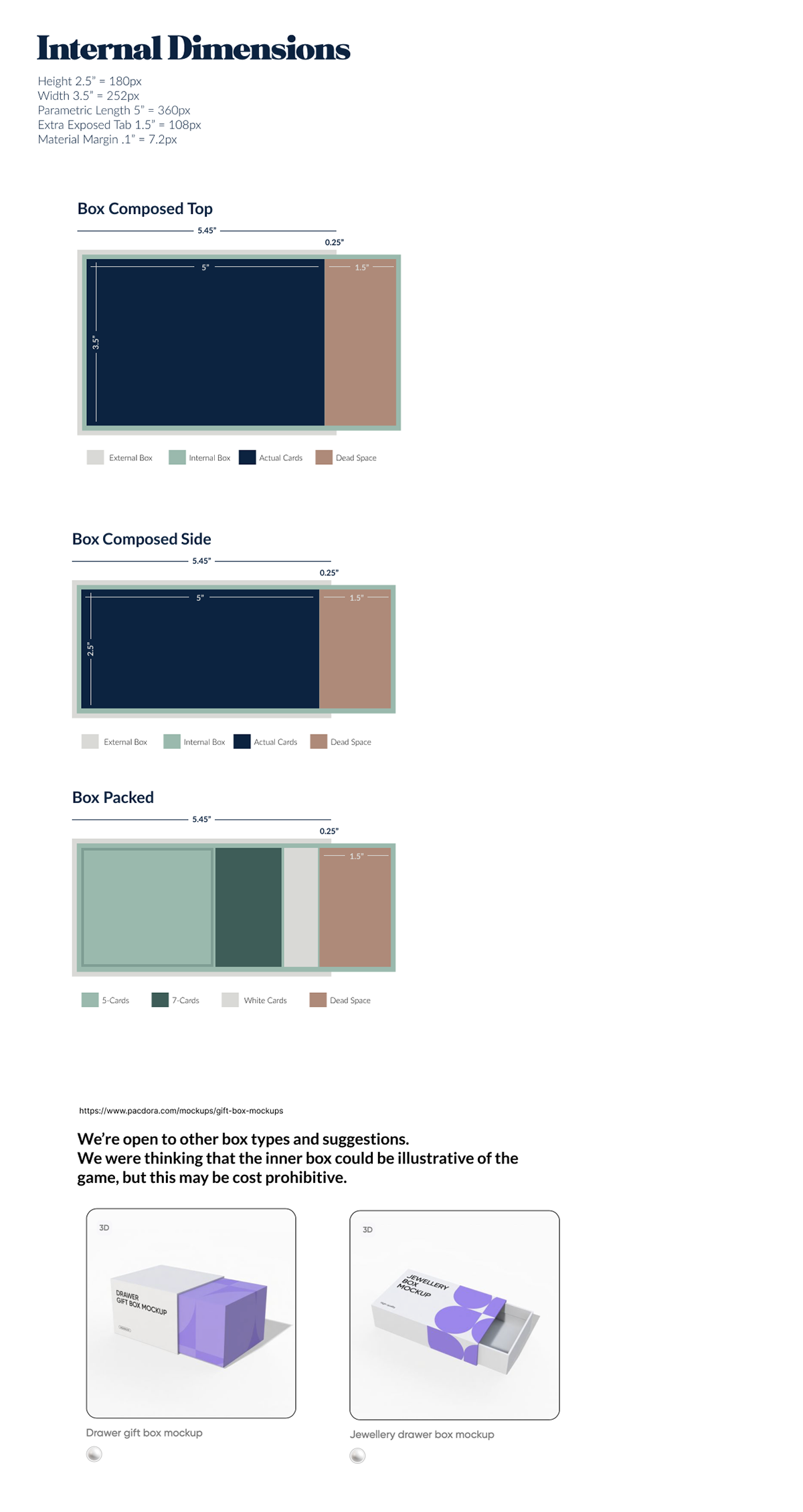
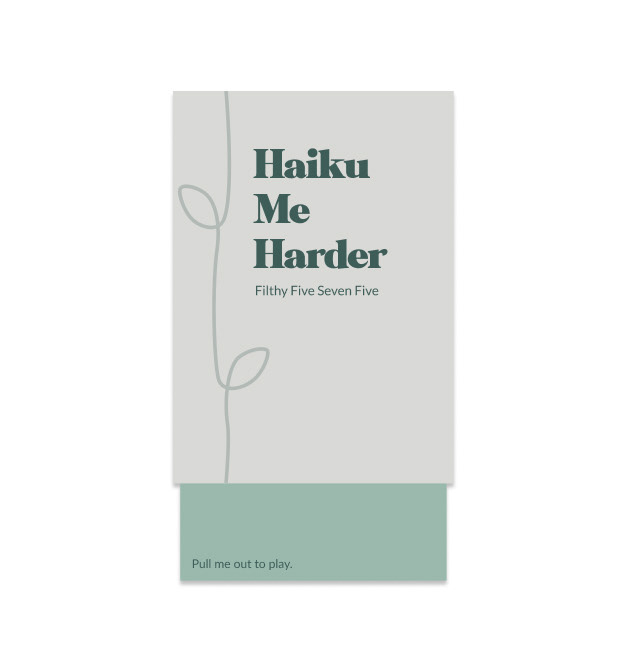
Final Box Designs
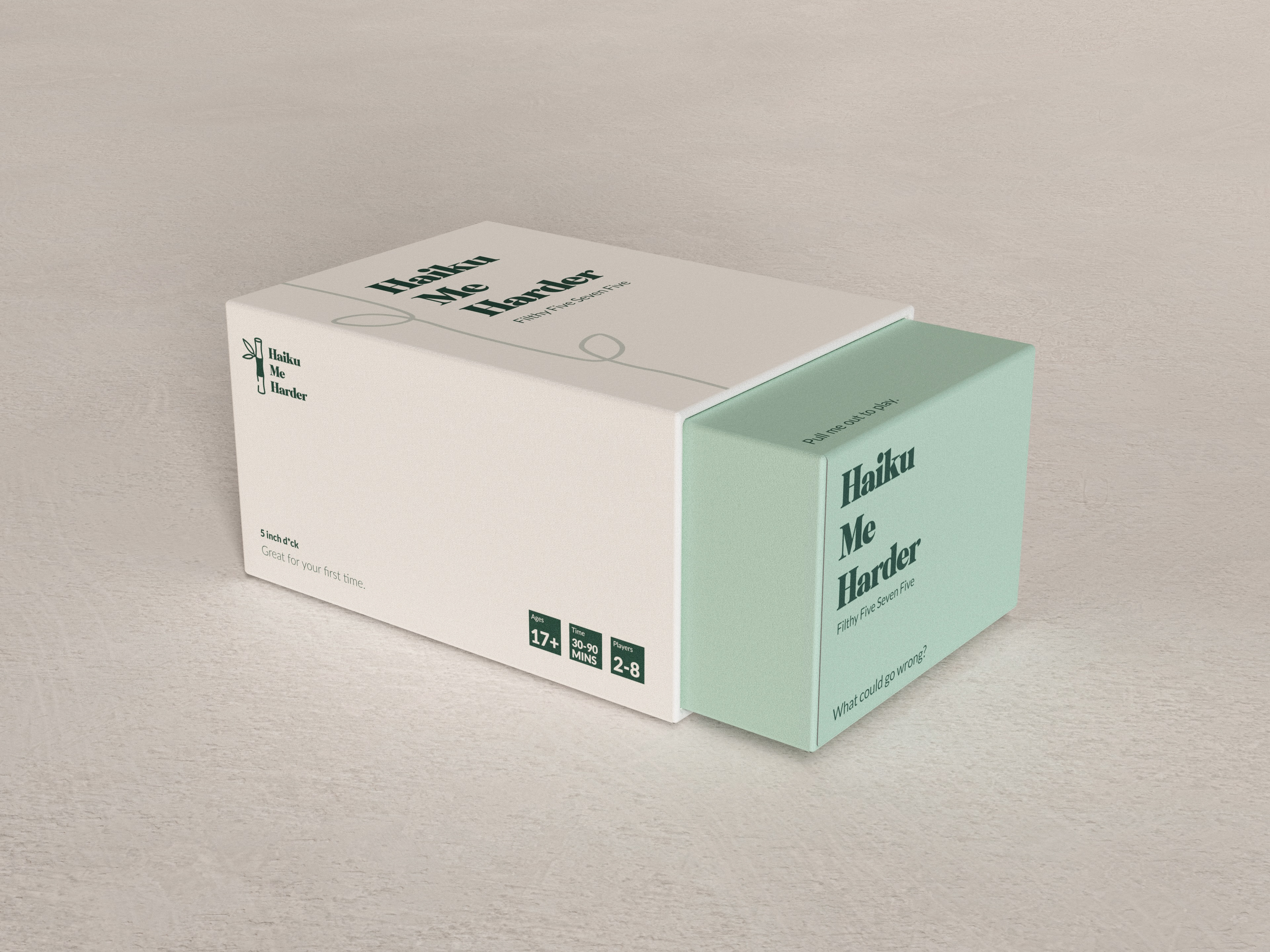
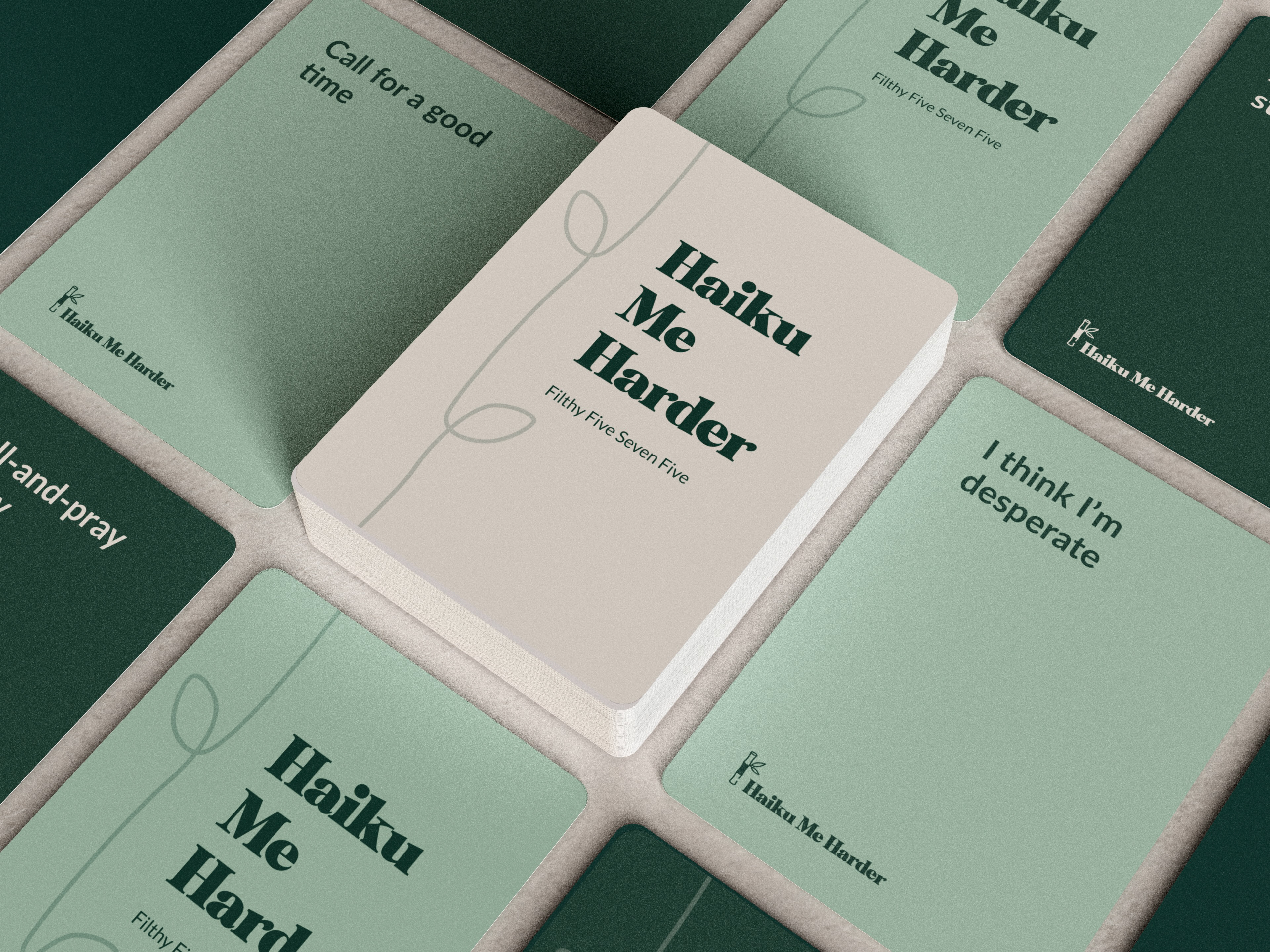
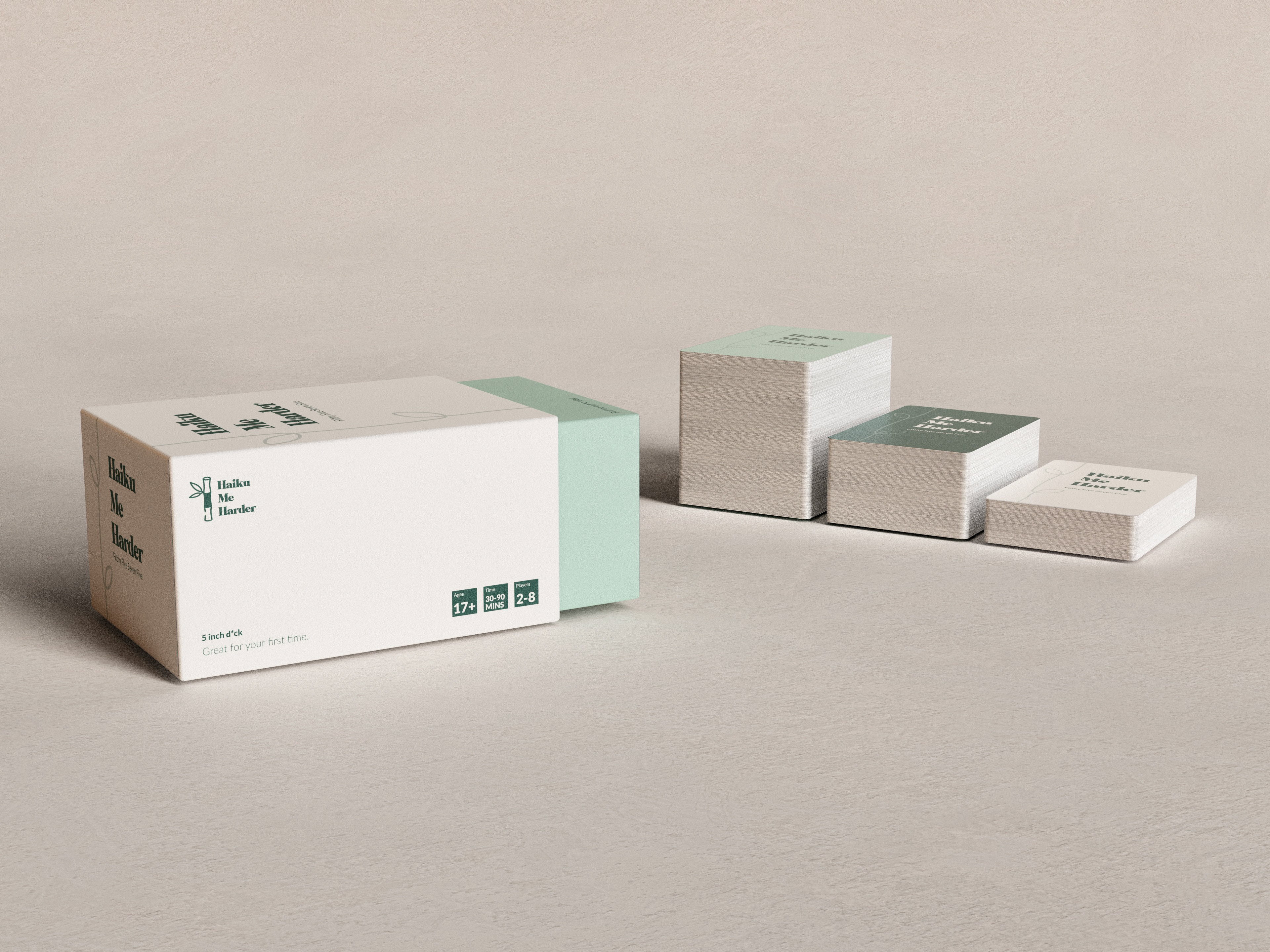
Designing the Haiku Me Harder Website
Trying to design and develop a card game on my own was no small feat. To move quickly and stay focused on the core product, I leaned on AI tools to jumpstart the creative process.
For the website, I used Relume as a low-fidelity starting point. This gave me a strong foundation to visualize layouts and explore early directions without spending too much time in the weeds. From there, I brought the concepts into Figma, where I refined the designs, made adjustments to better match the brand, and fully designed out the site experience.
This workflow allowed me to balance speed and craft, using AI to accelerate the starting line, then layering on my own design judgment to create something polished, functional, and true to the spirit of the game.
Relume Designs
Building off Relume's Designs
After finalizing the layout, I dove into vibe coding with Lovable, my first hands-on experience bringing a design to life through code. It felt less like traditional development and more like shaping something alive in real time. In just two days, I transformed static Figma files into a fully functional site. The process was fast, intuitive, and incredibly rewarding, proof that with the right tools, ideas can move from concept to launch almost instantly.
Next Steps
Once the first version of the game was in hand, I sent surveys to playtesters to gather feedback. The responses were invaluable,. I’ve iterated on card prompts, rules, and even packaging based on what players loved (and what they didn’t). This cycle of testing and refining has been core to shaping the game into something both fun and replayable.
The next stage is to evolve the website into an e-commerce platform, where I can presell games and accessories. Beyond the deck itself, I plan to expand the brand into playful merch, like coffee mugs featuring “dirty” haiku, cheeky towels, and even barware or tote bags that carry the same irreverent spirit.
From there, I’ll be building out my Kickstarter page, creating a launch video, and taking the game live for preorders. I’ve already partnered with a trusted card vendor in China and have production lined up, so once the campaign funds, we’ll be ready to move quickly.
I’m excited to see what comes next! Follow along on Instagram to watch the story of Haiku Me Harder continue to unfold.
